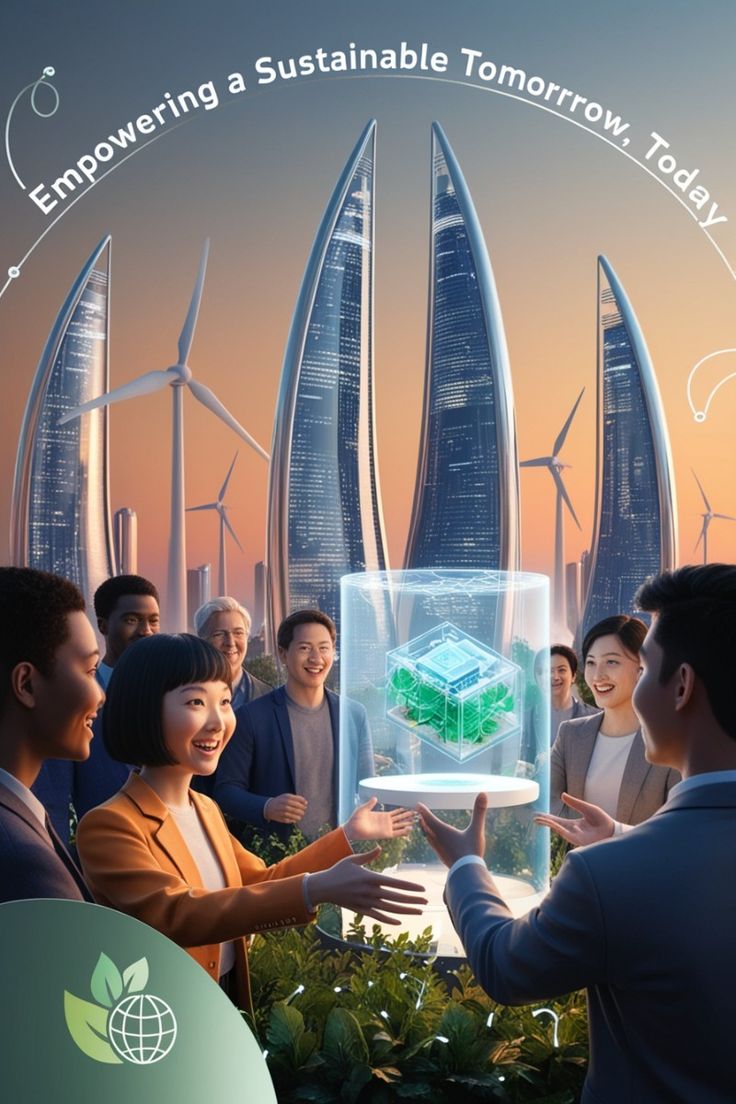Renewable Energy Innovations (Solar, Wind, and Energy Storage): Shaping a Sustainable Future in 2025
Renewable Energy Innovations As the world continues to grapple with the environmental challenges of the 21st century, renewable energy innovations are leading the charge toward a cleaner, more sustainable future. In 2025, significant breakthroughs in solar power, wind energy, and energy storage are shaping the global transition to renewable sources, reducing dependence on fossil fuels, and mitigating the effects of climate change. With an increasing demand for sustainable energy solutions, the advancements in these sectors are crucial in enabling a greener and more resilient energy infrastructure.
This article will delve into the cutting-edge innovations in solar, wind energy, and energy storage that are making renewable energy more efficient, affordable, and accessible in 2025.
Solar Energy Innovations: Harnessing the Power of the Sun; Renewable Energy Innovations
Solar energy has long been regarded as one of the most promising renewable resources, and innovations in solar technology are enhancing its efficiency and affordability. In 2025, solar power is no longer just a niche energy source for individual homes but is becoming a mainstream solution for utilities, industries, and even entire cities. Here are some of the latest developments in solar energy:
1. Bifacial Solar Panels; Renewable Energy Innovations
Bifacial solar panels are a revolutionary innovation that allows panels to capture sunlight from both the front and rear surfaces, increasing the overall energy generation. These panels can absorb light reflected from the ground, water, or other surfaces, making them more efficient than traditional single-faced panels. In 2025, bifacial solar panels are expected to become a staple in both residential and commercial solar installations, offering higher efficiency and lower cost per watt.
2. Perovskite Solar Cells; Renewable Energy Innovations
Perovskite solar cells are an exciting innovation in solar energy, offering a more affordable, efficient, and lightweight alternative to traditional silicon-based solar cells. Perovskite cells have the potential to achieve higher efficiency at a fraction of the cost, thanks to their unique crystalline structure. In 2025, research into perovskite solar cells is expected to accelerate, with major advancements in their durability and scalability, making them a viable option for large-scale solar farms and residential installations.
3. Solar Paint and Solar Windows; Renewable Energy Innovations
In 2025, solar paint and solar windows are emerging as groundbreaking technologies for integrating solar power into everyday buildings and structures. Solar paint is a thin, flexible coating that can be applied to surfaces, such as walls or roofs, to generate electricity. Similarly, solar windows are designed to capture sunlight and convert it into energy while still allowing light to pass through. These innovations are transforming how we think about solar power, enabling it to be seamlessly integrated into urban environments and existing infrastructure.
4. Floating Solar Farms; Renewable Energy Innovations
Floating solar farms, or floating photovoltaic systems, are solar power installations that are placed on bodies of water like lakes, reservoirs, or oceans. These solar farms take advantage of water’s natural cooling effect to increase efficiency and reduce the risk of overheating. Floating solar arrays also help conserve land space and are ideal for regions with limited land availability. In 2025, floating solar power systems are expected to become a significant contributor to the global solar energy capacity.
Wind Energy Innovations: Powering the World with Wind; Renewable Energy Innovations
Wind energy has long been a staple of renewable power generation, and 2025 sees further advancements in both onshore and offshore wind turbines. These innovations are making wind energy more efficient, scalable, and capable of generating power in diverse environments.
1. Vertical Axis Wind Turbines (VAWTs); Renewable Energy Innovations
While traditional wind turbines are large, horizontal-axis turbines, vertical-axis wind turbines (VAWTs) are gaining attention in 2025 for their smaller footprint and ability to capture wind from any direction. VAWTs are ideal for urban environments and smaller spaces where conventional horizontal turbines may not be suitable. These turbines are also quieter and can operate at lower wind speeds, making them an appealing solution for decentralized, local energy generation.
2. Offshore Wind Farms and Floating Turbines; Renewable Energy Innovations
Offshore wind energy is a rapidly growing sector, and in 2025, offshore wind farms are set to play an even larger role in global energy production. Floating wind turbines, which can be positioned in deeper waters than traditional turbines, are enabling wind farms to be located far from shore, where winds are stronger and more consistent. These innovations open up vast areas of the ocean for wind energy generation and are expected to significantly increase global offshore wind energy capacity.
3. Smart Wind Turbines; Renewable Energy Innovations
Advances in sensor technology and artificial intelligence (AI) are making wind turbines smarter and more efficient. Smart turbines equipped with IoT sensors can monitor their own performance, detect mechanical issues before they cause breakdowns, and optimize power generation based on real-time wind conditions. This technology allows wind farms to operate more efficiently and at lower costs, increasing their contribution to the renewable energy mix.
4. Bladeless Wind Energy Generators; Renewable Energy Innovations
Bladeless wind energy generators are an innovative approach to harnessing wind power without the need for traditional turbine blades. Instead of rotating blades, these generators rely on vibrations caused by the wind to generate electricity. In 2025, bladeless wind energy is becoming a promising option for urban environments, where space and noise concerns may limit the installation of conventional wind turbines. These generators have the potential to be quieter, more durable, and more aesthetically pleasing than traditional turbines.
Energy Storage Innovations: Storing Power for the Future; Renewable Energy Innovations
One of the major challenges of renewable energy is its intermittent nature. Solar and wind power generation depends on weather conditions, and energy production can vary throughout the day and year. To address this, energy storage technologies are crucial for ensuring a steady, reliable power supply. In 2025, energy storage is undergoing rapid innovation, with new solutions aimed at improving the efficiency, scalability, and affordability of storage systems.
1. Solid-State Batteries; Renewable Energy Innovations
Solid-state batteries are a next-generation energy storage solution that offers significantly higher energy density and longer lifespans compared to conventional lithium-ion batteries. Unlike traditional batteries that use liquid electrolytes, solid-state batteries use solid materials, making them safer and more efficient. These batteries are poised to revolutionize energy storage for both electric vehicles (EVs) and renewable energy systems by providing more compact, longer-lasting, and faster-charging storage solutions.
2. Grid-Scale Storage Systems; Renewable Energy Innovations
As renewable energy becomes a larger part of the global energy mix, grid-scale storage systems are essential for balancing supply and demand. In 2025, technologies like pumped hydro storage, compressed air energy storage (CAES), and liquid air energy storage (LAES) are advancing, providing large-scale energy storage solutions that can store massive amounts of energy for later use. These systems help stabilize the grid, ensuring that renewable energy is available even when the sun isn’t shining or the wind isn’t blowing.
3. Flow Batteries; Renewable Energy Innovations
Flow batteries are an emerging energy storage technology that stores energy in liquid electrolytes, which are circulated through the system to generate power. Unlike traditional batteries, flow batteries can be easily scaled up for large-scale storage and are particularly suitable for storing renewable energy from wind and solar. In 2025, flow batteries are expected to become a viable solution for long-duration energy storage, enabling a more reliable and consistent renewable energy supply.
4. Vehicle-to-Grid (V2G) Technology; Renewable Energy Innovations
Vehicle-to-grid (V2G) technology is an innovative solution that allows electric vehicles (EVs) to store excess energy in their batteries and feed it back into the grid when needed. In 2025, V2G technology is expected to play a key role in energy storage by leveraging the growing number of EVs to provide flexible, distributed energy storage solutions. This innovation not only helps balance the grid but also reduces the need for large-scale battery storage systems.
The Future of Renewable Energy Innovations
Renewable Energy Innovations: The innovations in solar, wind, and energy storage technologies in 2025 mark a pivotal moment in the transition to a sustainable energy future. As these technologies continue to improve, the cost of renewable energy will continue to decrease, making it more accessible and affordable for consumers and businesses alike. The global shift towards renewable energy will reduce greenhouse gas emissions, combat climate change, and create new economic opportunities in the green energy sector.
However, challenges remain, including the need for stronger grid infrastructure, intermittency management, and policy support to accelerate the adoption of renewable energy. Nevertheless, with these innovations and ongoing advancements, the future of energy is set to be cleaner, greener, and more sustainable than ever before.
In summary, solar, wind, and energy storage innovations are paving the way for a world powered by renewable energy. By 2025, these technologies will be integral to meeting global energy demands while mitigating the impacts of climate change, creating a more sustainable and prosperous future for all.










